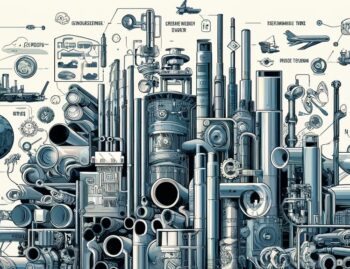The Chinese steel industry is large, complex and an important force in the international market. In fact China is the largest steel producer in the world with around 50% of total production. The changes in this sector reverberate around the world. In addition, 2015 will be a very important year to determine the fate of the industry as it moves to a lower growth stage domestically.
Deteriorating Market Conditions
As the real estate and infrastructure market in China continues to cool sales have been slowly decreasing in the past year domestically. The industry grew the slowest in 2014 since 1990. Additional regulations by the Chinese Ministry of Environmental Protection also increased the costs of production, making it hard for these firms to make a profit.
As a result, producers are looking to expand globally. In 2014, the industry exported 100 million metric tons of product, which was a record. In fact, governments and companies around the world cried fowl in 2014 as the many accused Chinese producers of selling steel for less than it cost to make, with the support, investment and cheap loans of the Chinese government.
2015 and Beyond
Overall, the first half of 2015 have been tough for the Chinese steel industry. Global iron ore prices are now at their lowest level since 2008 because of slowing demand. In fact, it was one of the worst performing commodities in 2014. Along with oil, the price slid down 50%.
In fact, the industry is expected to decrease from 710 million tons of use in 2014 to 707 million tons in 2015 and 703 million tons in 2016 according to the World Steel Association. Although the first half is not over yet, expected demand is to be a little over 320 million tons (demand is usually back loaded each year due to the China new year holiday and slower winter months).
International Investors
International steel producers are greatly affected by the slowdown in China. The giants such as Vale S.A. (VALE), Rio Tinto PLC (RIO), and BHP Billiton (BHP) have invested over $120 billion in the last half decade, expecting the market to grow until 2025. Unfortunately, this has already proved a mistake as growth has plateaued and is shrinking slightly.
Domestic Steel Companies
Domestic companies in China have had poor performance in the stock market. Even worse, the government has indicated that it will not endlessly write bail out checks for the industry for poor performers. Overall GDP is 7% and continues to slowly drift downward so the days of double digit steel industry growth based on domestic demand are probably over. Instead, the industry will have to look overseas and to improved products in order to increase sales.
On the positive side, there is a good chance that major state owned steel producers will be merged. That will potentially take out some inefficiencies, reduce excess production and right size the industry. The price of iron ore may improve if these changes occur.











